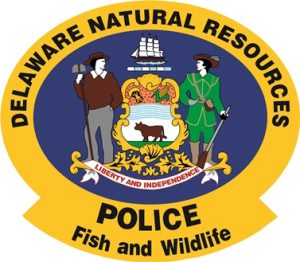Reminder for the week: Wildlife, fishing, boating area visitors asked to respect natural resources
 DOVER – To achieve public compliance through education and enforcement actions that help conserve Delaware’s fish and wildlife resources and ensure safe boating and public safety, DNREC Division of Fish & Wildlife Natural Resources Police officers between Feb. 15-21 made 1,067 contacts with anglers, boaters, hunters and the general public, including 18 vessel boardings for boating safety and fishing regulation compliance checks. Officers responded to 31 complaints and issued four citations, three of which were related to the C&D Canal Conservation Area and associated recreational trail, where there is an increased Fish & Wildlife Natural Resources Police presence.
DOVER – To achieve public compliance through education and enforcement actions that help conserve Delaware’s fish and wildlife resources and ensure safe boating and public safety, DNREC Division of Fish & Wildlife Natural Resources Police officers between Feb. 15-21 made 1,067 contacts with anglers, boaters, hunters and the general public, including 18 vessel boardings for boating safety and fishing regulation compliance checks. Officers responded to 31 complaints and issued four citations, three of which were related to the C&D Canal Conservation Area and associated recreational trail, where there is an increased Fish & Wildlife Natural Resources Police presence.
Citations issued this week by offense category included the following, with the number of charges in parentheses:
Wildlife Conservation: Failure to tag antlered deer (1), trespassing after hours on a state wildlife area (2)*, and damaging state property on a state wildlife area (1)*.
* Citations issued at the C&D Canal Conservation Area.
Are you AWARE?
DNREC’s Division of Fish & Wildlife Natural Resources Police remind visitors to state wildlife areas, fishing piers and boat launching facilities that these areas are closed to the public from sunset to sunrise unless a person is actively and lawfully engaged in fishing, hunting or boating in accordance with state regulations and individual wildlife area rules. Individuals not meeting these requirements who are found in these areas between sunset and sunrise face fines up to $100 for trespassing after hours.
Wildlife area visitors also are reminded that it is illegal to operate motor vehicles – including motorcycles, cars, trucks and SUVs – off established roadways in state wildlife areas. Violators found to have caused damage also will be cited for destruction of state property. In addition, operating a motor vehicle that is not licensed for use on established public roadways – including ATVs – is prohibited both on and off-road on state wildlife areas.
“With recent heavy rains and changing temperatures, the ground is especially vulnerable to damage from vehicles operating off-road,” said Sgt. John McDerby of Fish & Wildlife Natural Resources Police. “Doing ‘donuts’ or four-wheeling in wildlife areas is irresponsible and illegal behavior that damages essential wildlife habitat, as well as generating unnecessary work and expense to repair the damage.”
Other noteworthy general rules and regulations to remember include:
- Camping, swimming, fires, target shooting (including paintball) and dumping or littering are prohibited in state wildlife areas.
- Dog training is permitted only within established dog training areas or during open hunting seasons for the game animals that the dog is being trained to hunt.
- Hunting is permitted only in specified areas and only during designated hunting seasons.
- Firearms are prohibited on state wildlife areas from March 1 to Aug. 31, except during legal hunting seasons or as authorized by the Division of Fish & Wildlife.
- All state wildlife areas are designated carry-in, carry-out for trash.
For more information on individual wildlife areas, including the rules and regulations specific to each wildlife area, wildlife area visitors are encouraged to check out Delaware wildlife area maps. These maps are available in hard copy at DNREC’s Dover licensing desk in the Richardson & Robbins Building, 89 Kings Highway, Dover, and online at Delaware Wildlife Area Maps.
DNREC’s Division of Fish & Wildlife recognizes and thanks the majority of anglers, hunters and boaters who comply with and support Delaware’s fishing, hunting and boating laws and regulations. Citizens are encouraged to report fish, wildlife and boating violations to the Delaware Fish & Wildlife Natural Resources Police by calling 302-739-4580. Wildlife violations may also be reported anonymously to Operation Game Theft by calling 800-292-3030 or online at http://de.gov/ogt.
Media Contacts: Cpl. John McDerby, DNREC Division of Fish & Wildlife Natural Resources Police, 302-739-9913 or 302-354-1386, or Joanna Wilson, DNREC Public Affairs, 302-739-9902
Vol. 46, No. 60